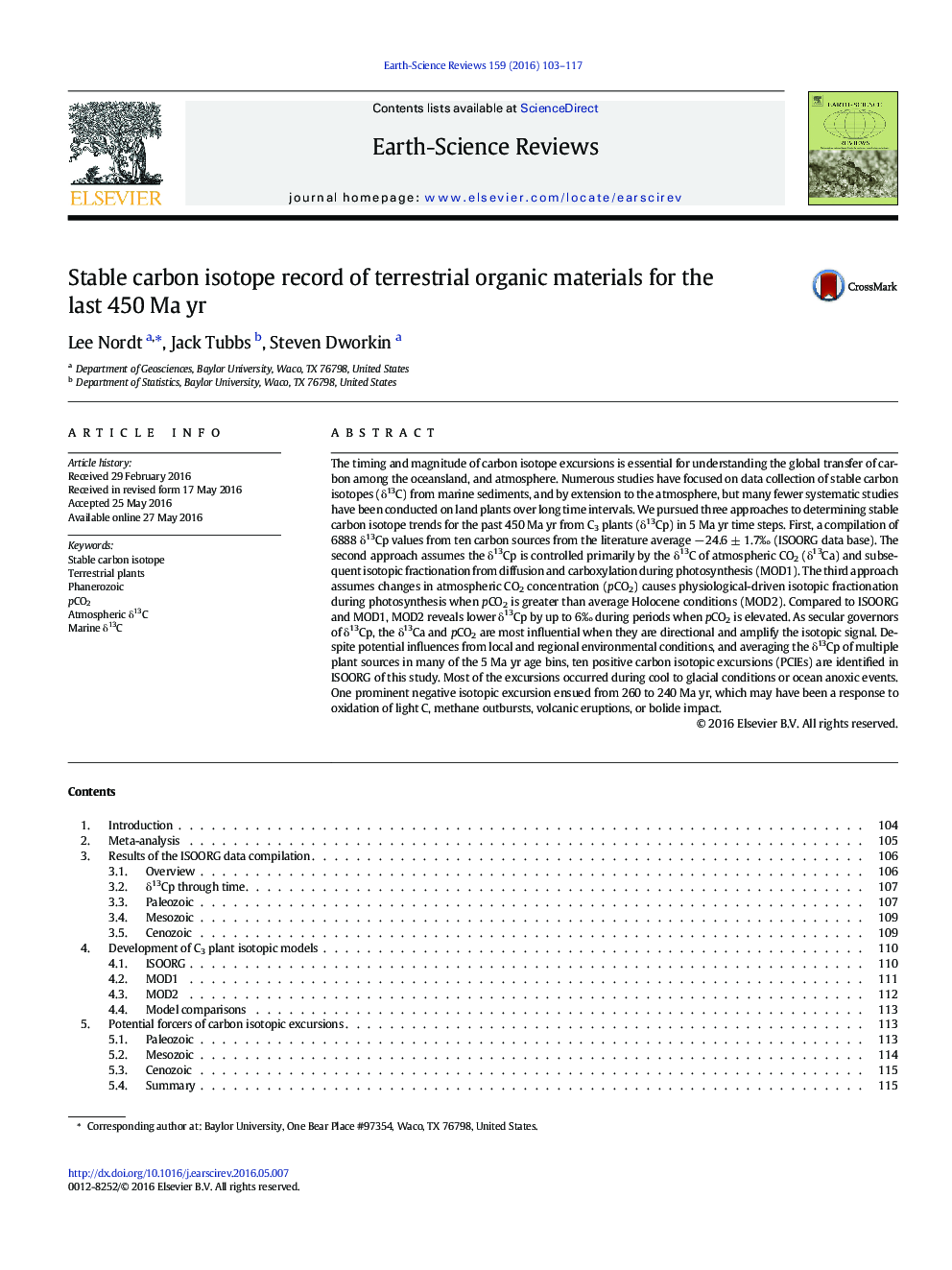| کد مقاله | کد نشریه | سال انتشار | مقاله انگلیسی | نسخه تمام متن |
|---|---|---|---|---|
| 6442842 | 1639943 | 2016 | 15 صفحه PDF | دانلود رایگان |
عنوان انگلیسی مقاله ISI
Stable carbon isotope record of terrestrial organic materials for the last 450 Ma yr
دانلود مقاله + سفارش ترجمه
دانلود مقاله ISI انگلیسی
رایگان برای ایرانیان
کلمات کلیدی
موضوعات مرتبط
مهندسی و علوم پایه
علوم زمین و سیارات
زمین شناسی
پیش نمایش صفحه اول مقاله

چکیده انگلیسی
The timing and magnitude of carbon isotope excursions is essential for understanding the global transfer of carbon among the oceansland, and atmosphere. Numerous studies have focused on data collection of stable carbon isotopes (δ13C) from marine sediments, and by extension to the atmosphere, but many fewer systematic studies have been conducted on land plants over long time intervals. We pursued three approaches to determining stable carbon isotope trends for the past 450 Ma yr from C3 plants (δ13Cp) in 5 Ma yr time steps. First, a compilation of 6888 δ13Cp values from ten carbon sources from the literature average â 24.6 ± 1.7â° (ISOORG data base). The second approach assumes the δ13Cp is controlled primarily by the δ13C of atmospheric CO2 (δ13Ca) and subsequent isotopic fractionation from diffusion and carboxylation during photosynthesis (MOD1). The third approach assumes changes in atmospheric CO2 concentration (pCO2) causes physiological-driven isotopic fractionation during photosynthesis when pCO2 is greater than average Holocene conditions (MOD2). Compared to ISOORG and MOD1, MOD2 reveals lower δ13Cp by up to 6â° during periods when pCO2 is elevated. As secular governors of δ13Cp, the δ13Ca and pCO2 are most influential when they are directional and amplify the isotopic signal. Despite potential influences from local and regional environmental conditions, and averaging the δ13Cp of multiple plant sources in many of the 5 Ma yr age bins, ten positive carbon isotopic excursions (PCIEs) are identified in ISOORG of this study. Most of the excursions occurred during cool to glacial conditions or ocean anoxic events. One prominent negative isotopic excursion ensued from 260 to 240 Ma yr, which may have been a response to oxidation of light C, methane outbursts, volcanic eruptions, or bolide impact.
ناشر
Database: Elsevier - ScienceDirect (ساینس دایرکت)
Journal: Earth-Science Reviews - Volume 159, August 2016, Pages 103-117
Journal: Earth-Science Reviews - Volume 159, August 2016, Pages 103-117
نویسندگان
Lee Nordt, Jack Tubbs, Steven Dworkin,